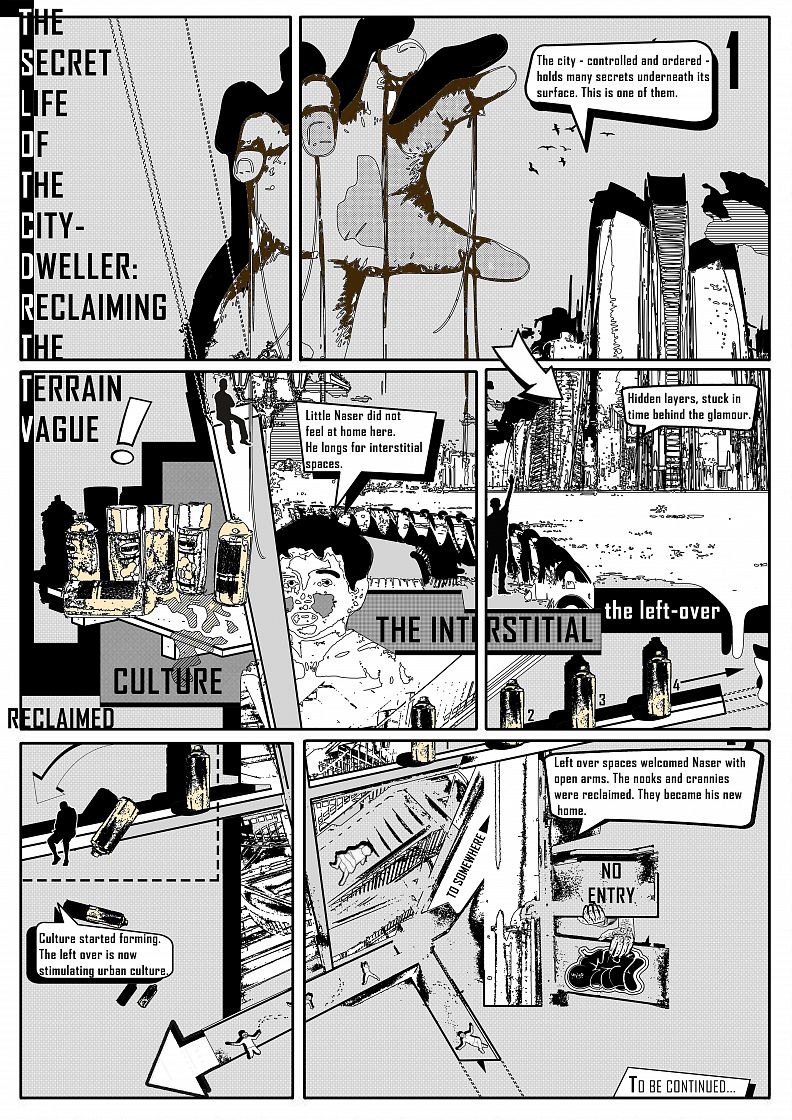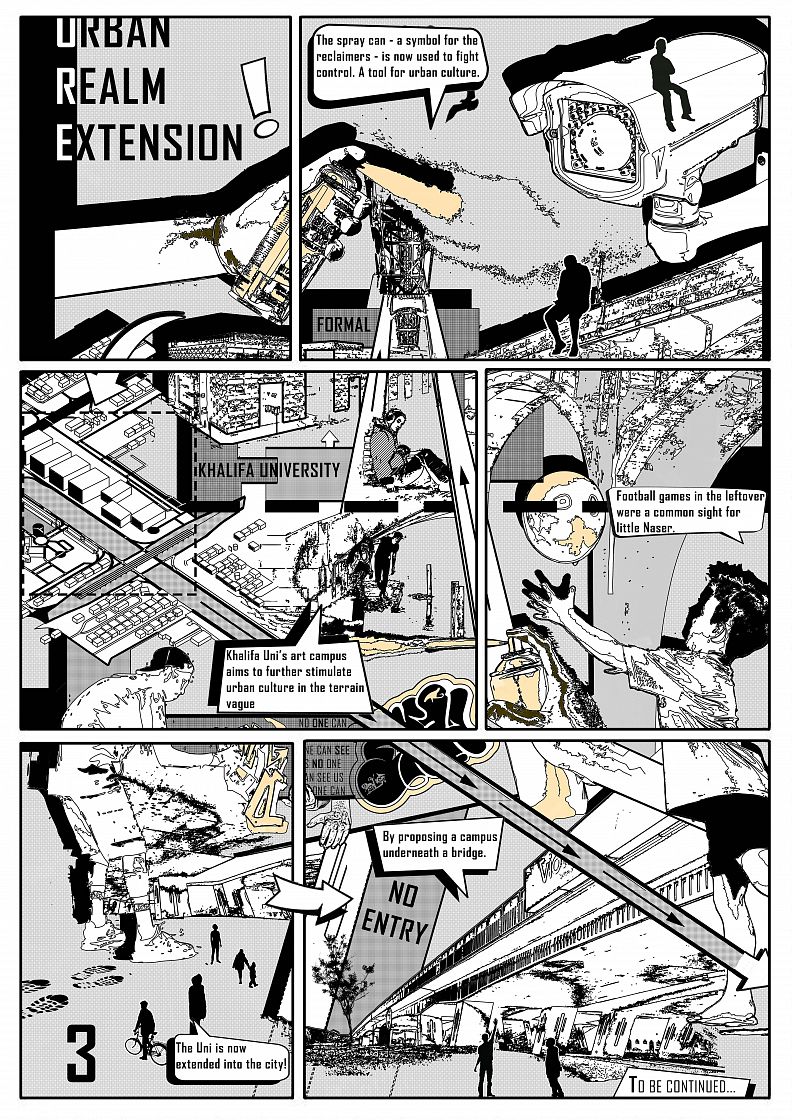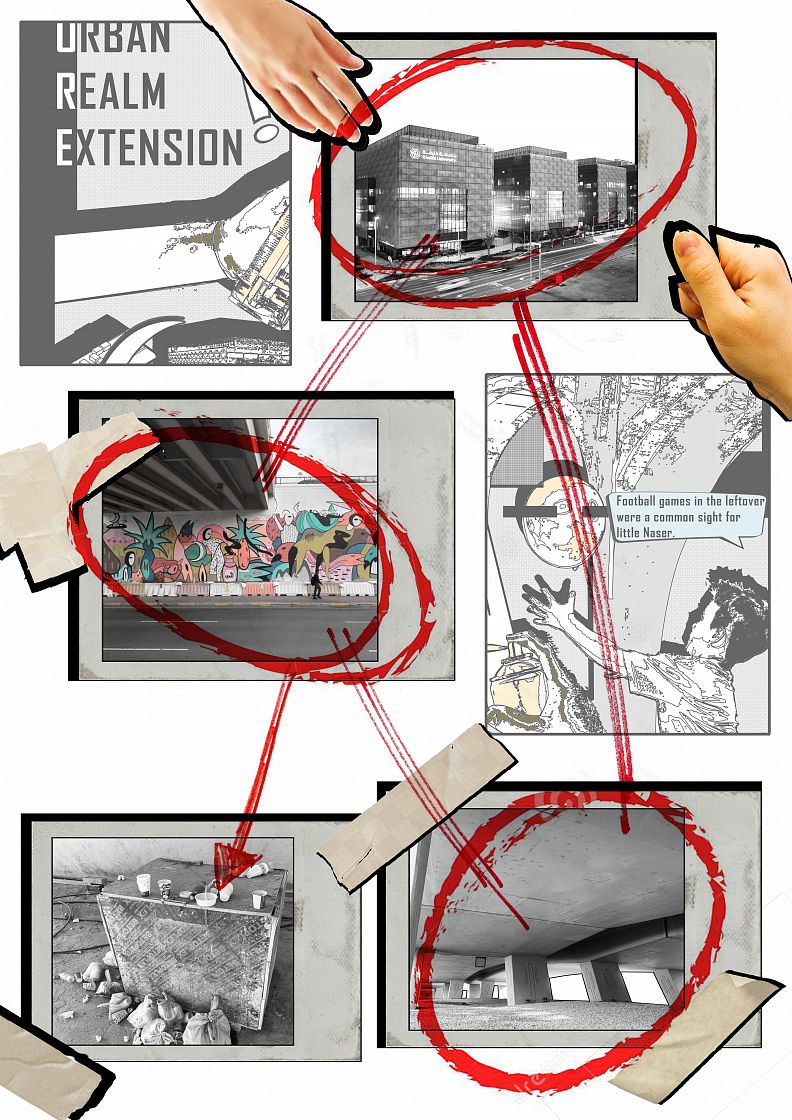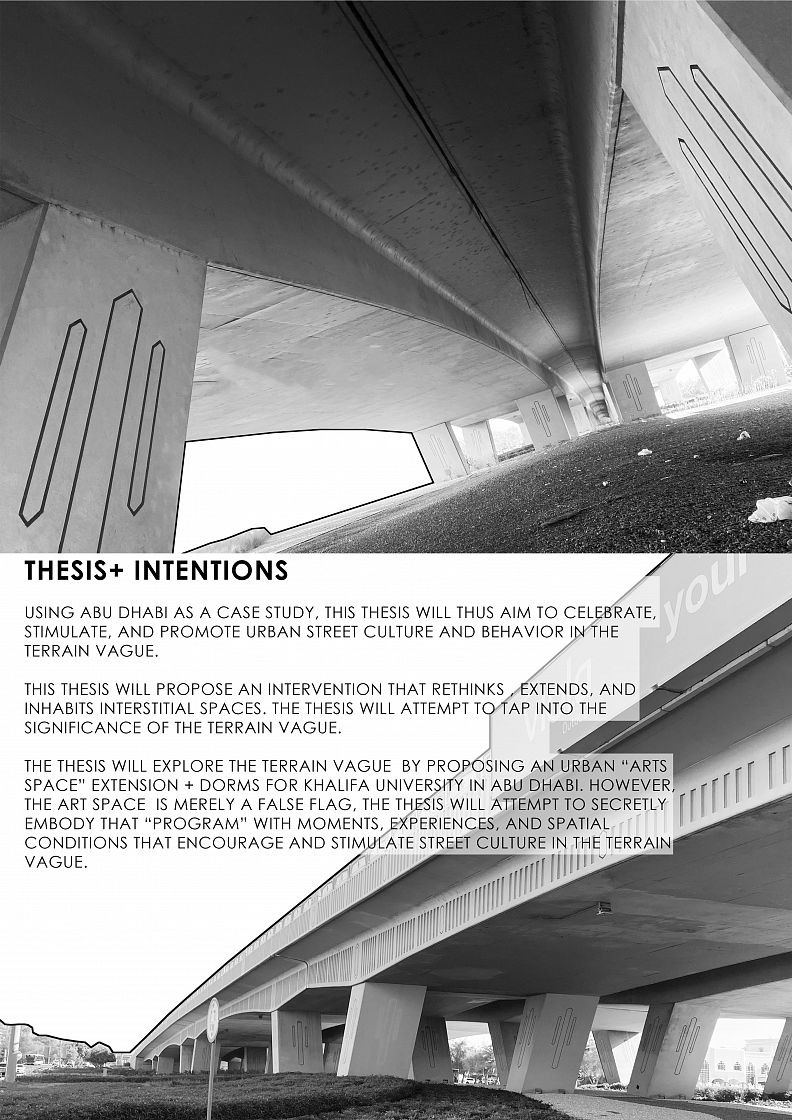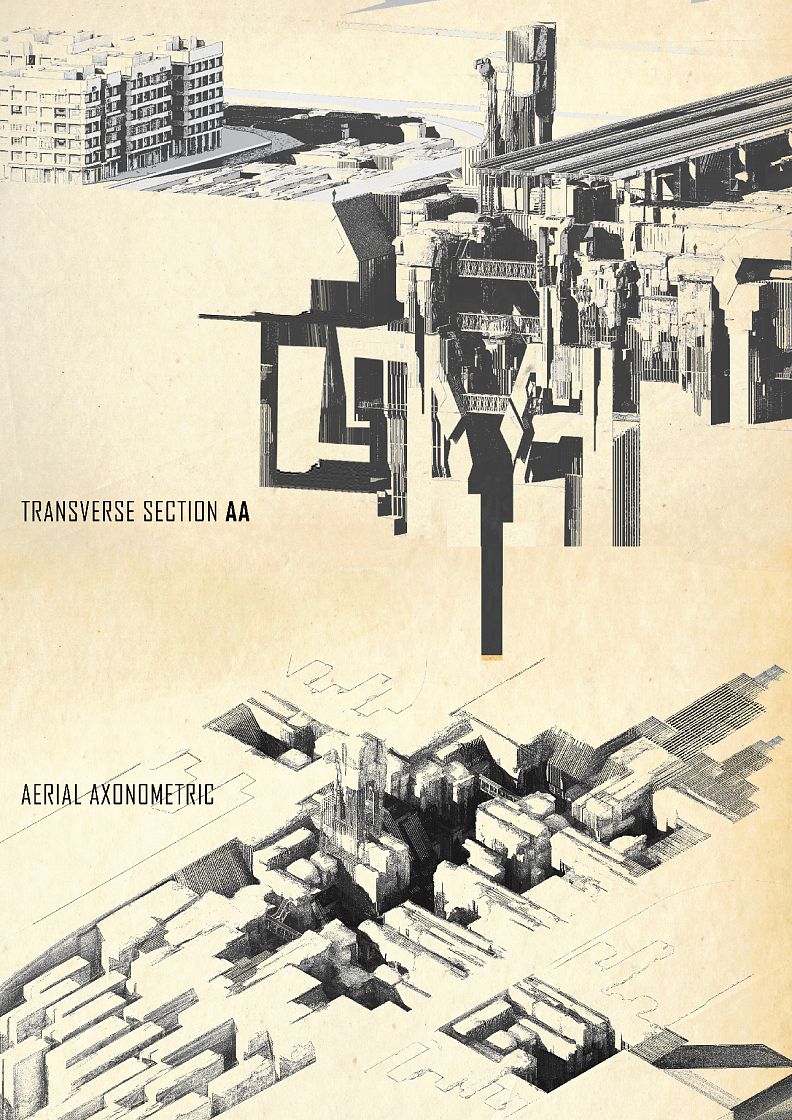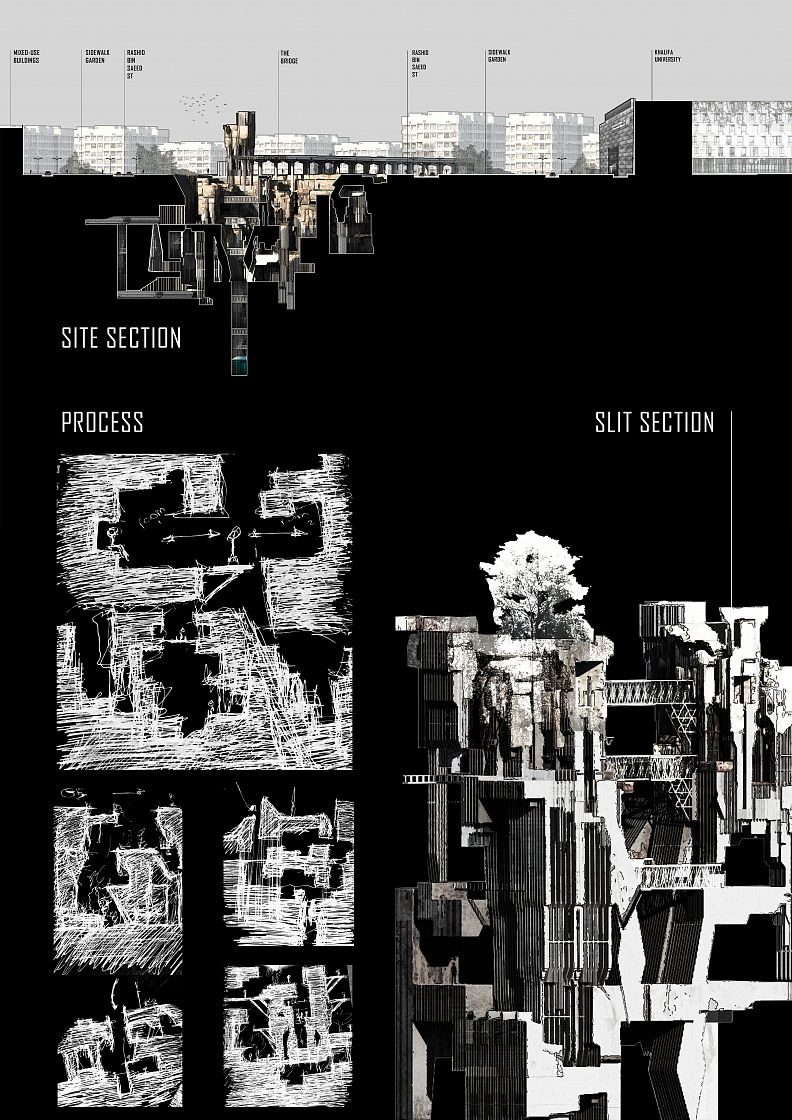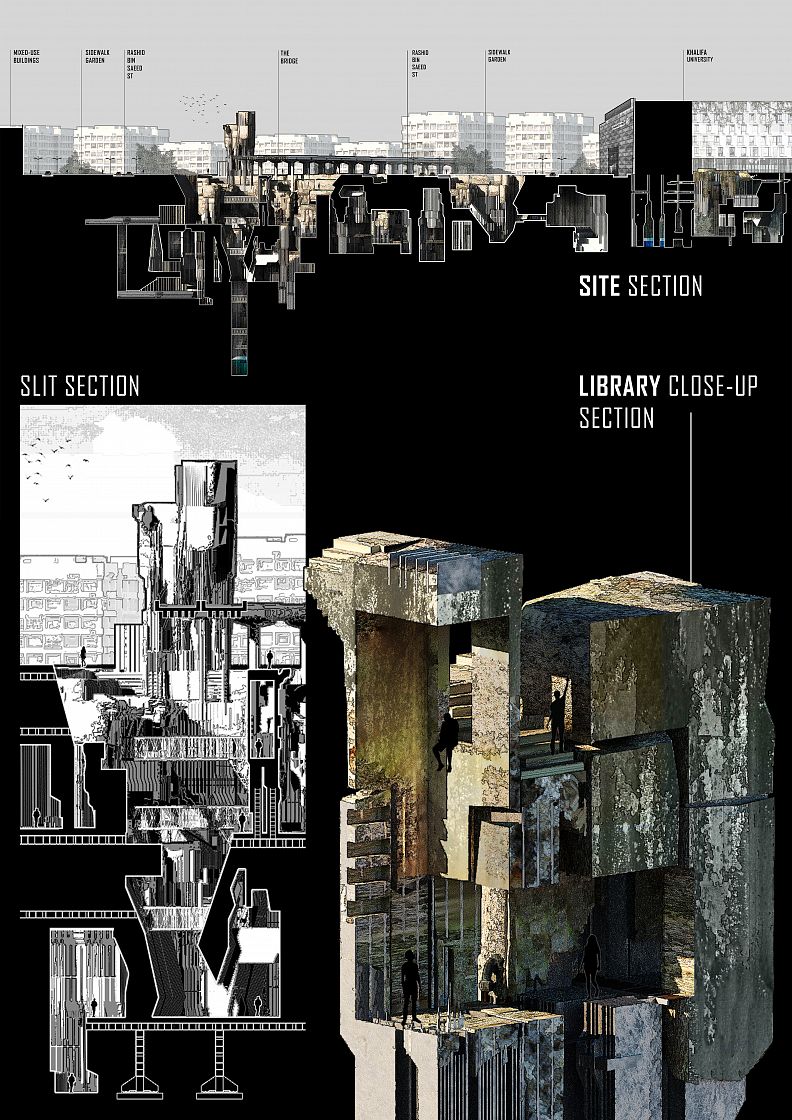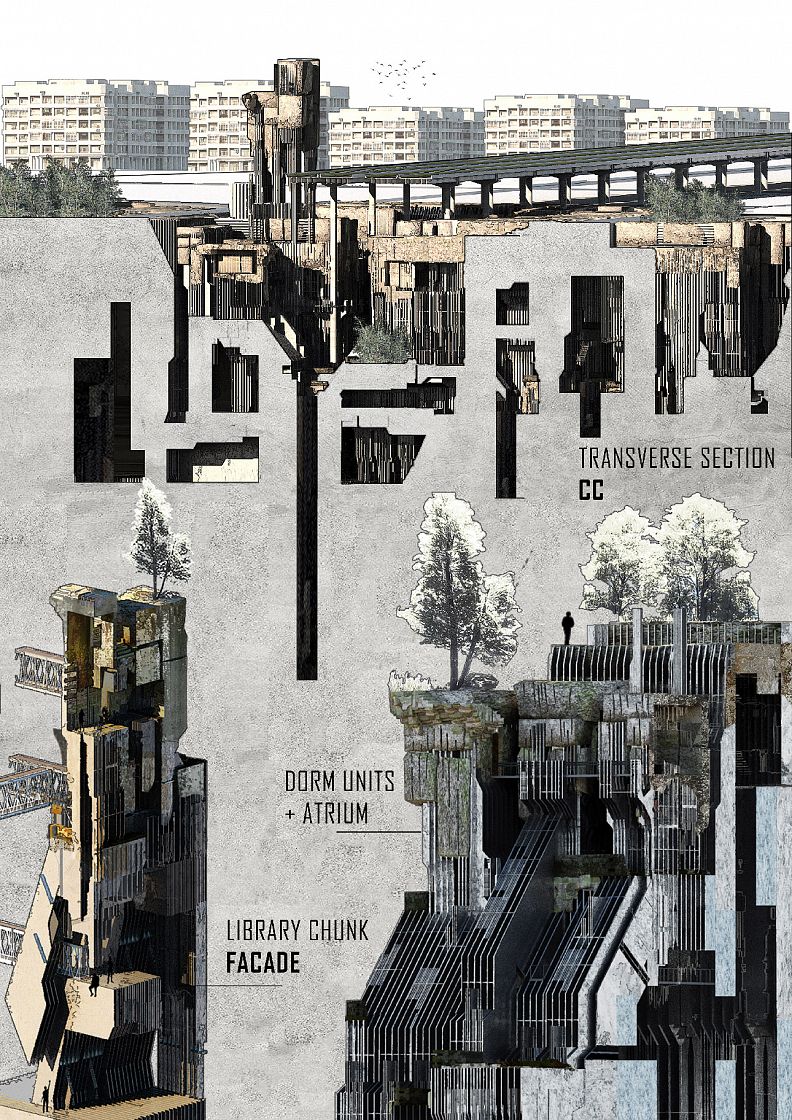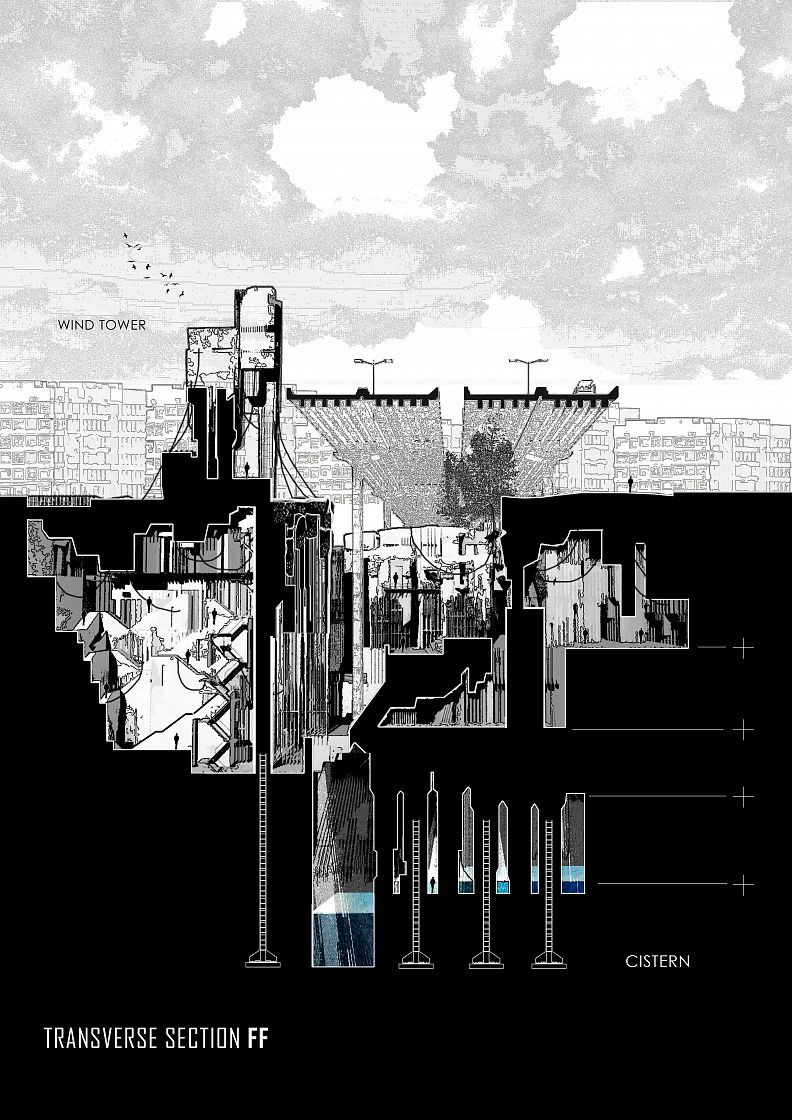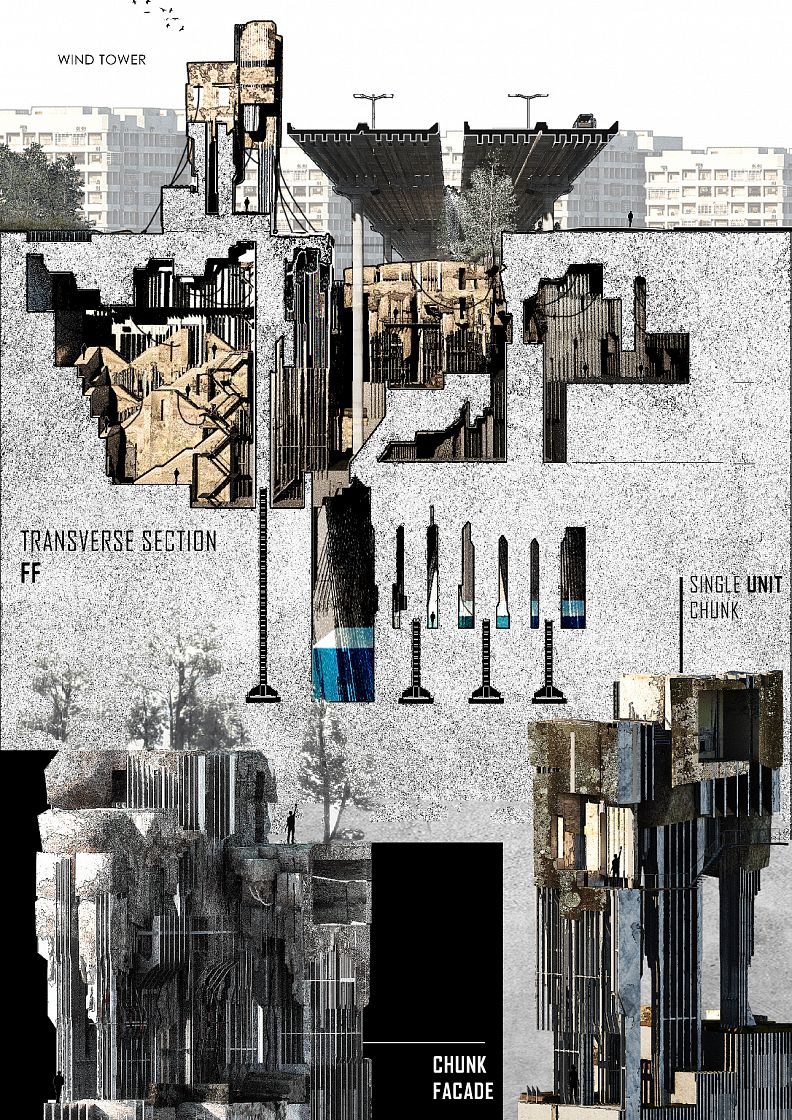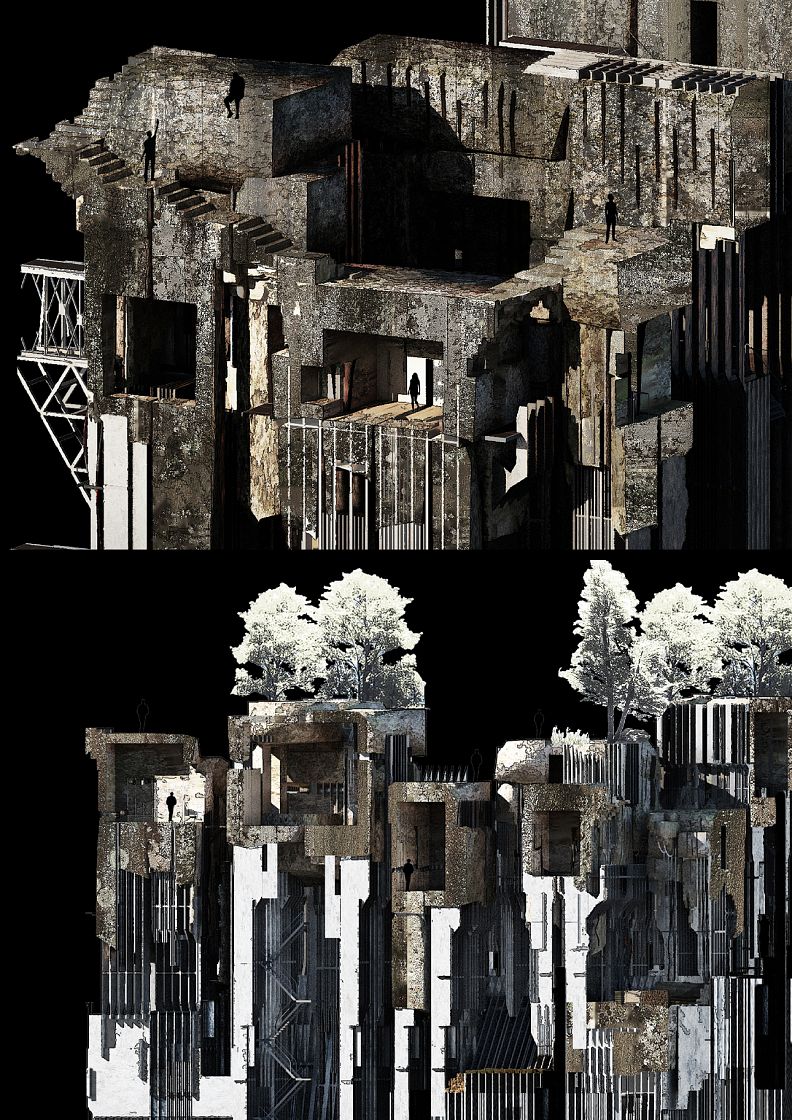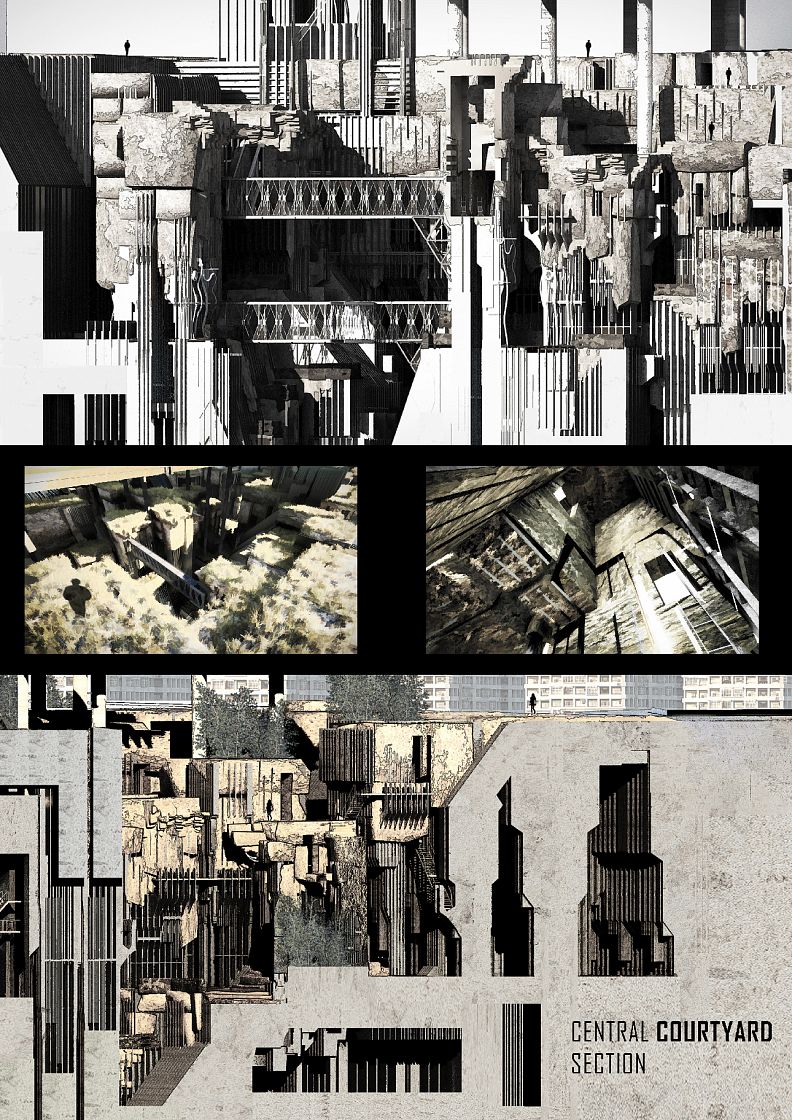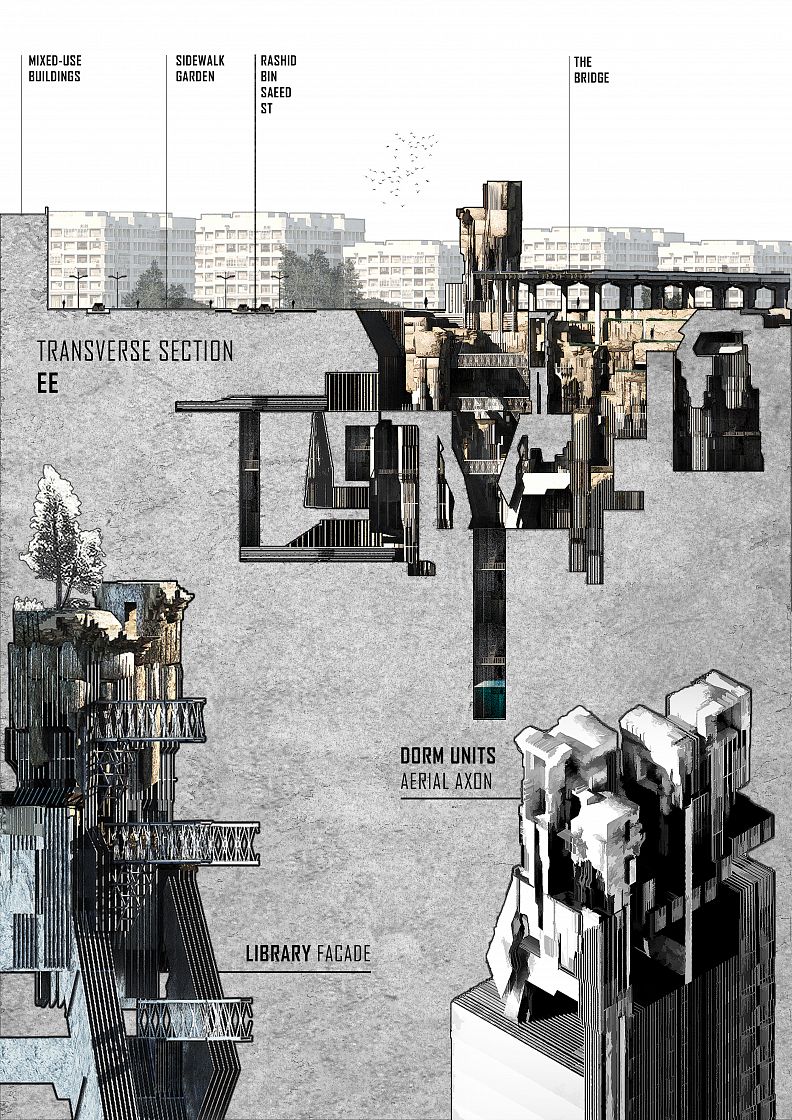The Secret Life of the City Dweller: Reclaiming the Terrain Vague

Idea projektu
The urban environment is multilayered, occasionally revealing its multiple skins as humans start unraveling its secrets. The urban environment is multilayered, often only calling attention to its “façade” – a façade in disguise. The urban environment is multilayered, hiding ambiguous spaces within its crevices and gaps. This thesis aims to dissect, expose, and bring attention to these ambiguous layers. Behind the glamour of its skyscrapers, Abu Dhabi’s urban jungle is filled with left-over spaces. Spaces that are stuck in time, forgotten by the mainstream. They are the back-of-house, the interstitial, the sublime, the accidental, and the uncertain. The underbelly of a bridge, a tunnel, or a stubborn alleyway. These spaces fall under the term “Terrain Vague”. The term, first coined by Ignasi de Solà-Morales, is used to describe vacant and forgotten areas of a city. The Terrain Vague is often associated with emptiness, though is that belief accurate? Truth is, the Terrain Vague is anything but empty. Yes, perhaps physically. However, our physical realm often falls short of revealing the truth. The Terrain Vague is jam-packed with cultural, social, and behavioral significance. The Terrain Vague becomes an important piece of urban life for the city-dweller in the Anthropocene. These interstitial spaces become hotspots for artistic expression, identity, and habits. They are moments that are infused with striking graffiti, culture, and expression. Whether it is in its irresistible lure in providing a space of respite for the city dweller, or in its seemingly accidental spatial condition that is perfect for gatherings; The Terrain Vague is no stranger to influencing our informal habits and behaviors. The Terrain Vague is special – compared to other more formal spaces – in that it does not resist us reclaiming it. City-dwellers tend to make Terrain Vague spaces their own, and thus attach memories to them. These spaces are now so sensitive and delicate due to the fact that they hold a special place in the hearts of many city-dwellers.
Popis projektu
Using Abu Dhabi as a case study, this thesis will thus aim to celebrate, stimulate, and promote street culture in the Terrain Vague by proposing an “Urban Arts Campus + Dorms extension” to Khalifa University. However, the “Art Space” is merely a false flag. In reality, the thesis will instead attempt to secretly embody that “program” with moments, experiences, and spatial conditions that encourage alternate street culture in the Terrain Vague. The thesis will tap into the underbelly of a bridge in order to fully explore the potential of the interstitial. This thesis will propose an intervention that rethinks how we reclaim, use, and inhabit left-over spaces. Keeping in mind the risk of gentrification, the thesis will attempt to celebrate the alternate “underground” cultural significance and informal human behavior that is associated with the Terrain Vague. By taking advantage of subtraction as an architectural tool, the project therefore attempts to tap into the subterranean in order to fully celebrate, simulate, stimulate, and extend urban street culture, expression, and behavior in the terrain vague. The site? A forgotten interstitial space that is situated underneath an urban bridge. Located within the dense urban fabric of Abu Dhabi, the underbelly of this bridge is seen as “undesirable” by the government, evidenced by the tendency to hide it from the public eye by making it hard to access. However, this did not prevent the average city-dweller from using that space informally. Make-shift tables, left-over teacups, and left-behind praying mats tell a different story. The remnants of certain activities indicate that this interstitial space is indeed informally occupied by city dwellers! This thesis thus aims to celebrate and maintain the informality of behaviors associated with the site. By taking advantage of subterranean conditions, the architecture of the project therefore preserves the hidden nature of the site, allowing these activities to continue. This is a piece of architecture that is meant to serve and preserve interstitial behaviors. The architecture does not aim to serve the mainstream, but the intention instead lies in creating spatial conditions that serve the “renegades” of urban society. The language of the project is inspired by the infrastructural nature of the underbelly of the bridge, where the crumbling and cracking of the ground paves the way to the reveal of a hidden mechanical subterranean space underneath the bridge. In addition to maintaining the hidden aspect of the site, the difficulty in accessing the site is also maintained throughout the project as it was deemed essential in spawning the terrain vague and any behaviors associated with it. This is done by using unconventional circulation routes and access to the project, such as circulation that involves climbing down, jumping, or clambering in order to descend and ascend into the project. By creating architecture that rejects norms associated with beauty – and therefore gentrification – the project thus preserves the “soul” of the bridge’s infrastructural underbelly. Ultimately, every design decision that influenced the architecture of the project, such as the usage of materiality or circulation, only aim to further preserve and stimulate the Terrain Vague and the social/behavioral/cultural significance associated with it.
Technické informace
The project's "official" program is essentially an "Urban Arts" + Dorms extension to Khalifa University in Abu Dhabi. By taking advantage of the projects subterranean nature, the extension is allowed to seep out from the university and therefore connect to the underbelly of the bridge. The underground allows the campus extension to become part of the urban fabric, merging with infrastructure and surrounding context. This creates an urban arts space that is fully integrated with the city rather than being isolated. Dorms units are scattered throughout and are placed between the ground and the subterranean. Moreover, materiality is exploited in order to further connect the project to the site. On the ground level, the project uses organic soil, stone, and rocks that relate to the pre-existing ground conditions that exist underneath the bridge. This in turn blends the project and hides it from the public eye, maintaining the hidden nature of the Terrain Vague. However, the project starts revealing itself as the city dweller gets closer and closer. The ground starts breaking apart to reveal a "hidden" infrastructural underground. This mechanical expression contrasts the organic ground and is only revealed underneath the bridge. It is inspired by the infrastructural language of the bridge and aims to extend that language underground. The edges of the site are carved in angles that allow sunlight in, with hidden garden courtyard pockets underground. By carving out a hidden urban space, the project therefore provides a space of respite within the hectic and loud urban conditions of the city.
